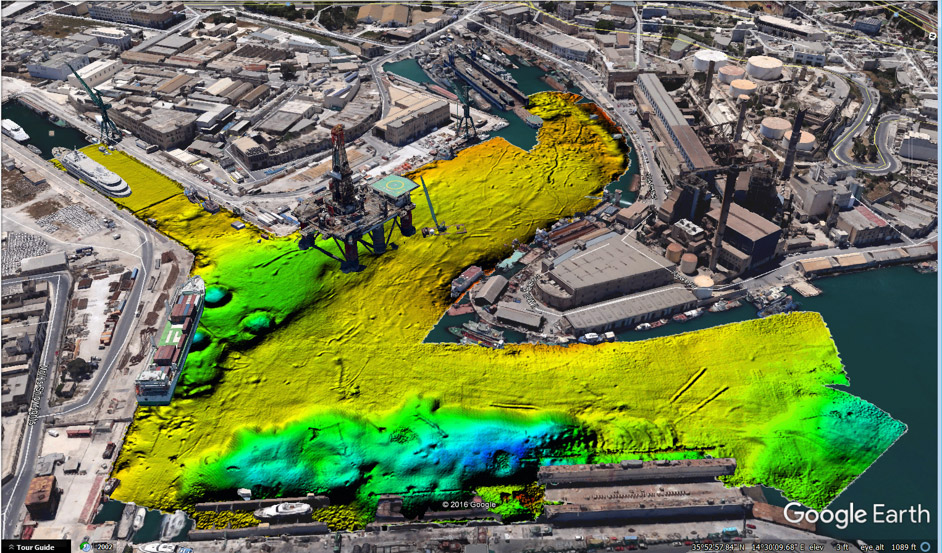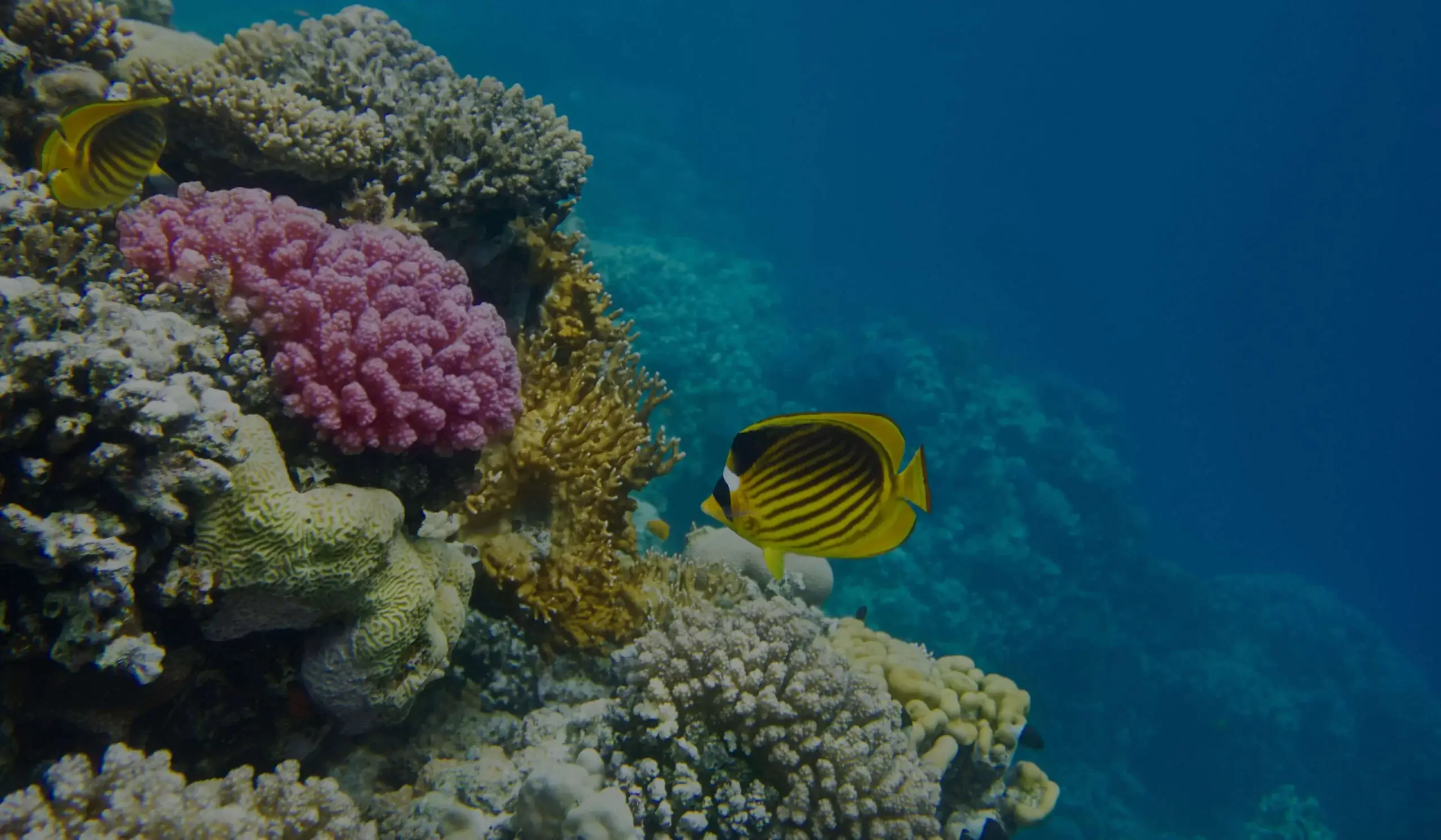Multibeam echosounders (MBES) are hydrographic surveying instruments that use sound waves to generate detailed images of the seafloor. The technology uses a series of beams that are angled to create a wide swath of coverage, allowing for high-resolution mapping of the seafloor. In this article, we will discuss the different types of MBES, their benefits, and their applications.
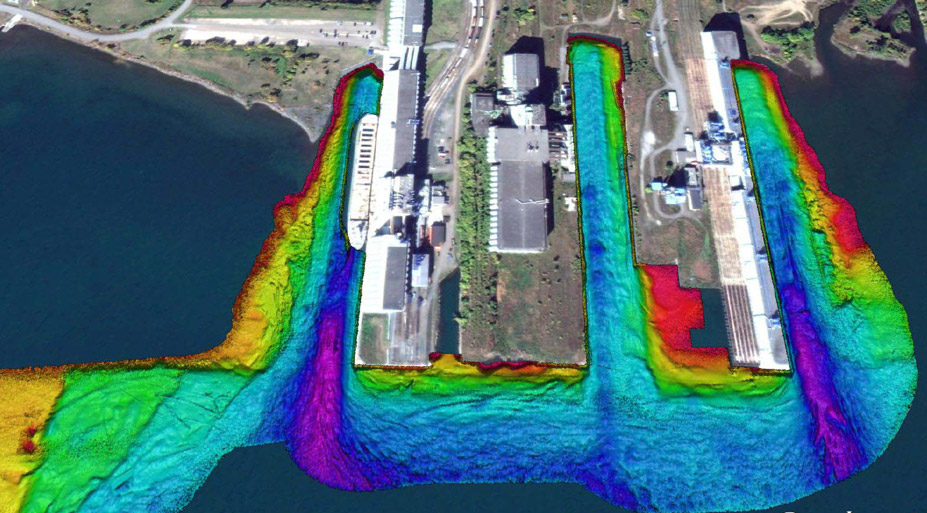
Types of Commercially Available Swath Bathymetry Systems
There are two technologies used in commercially available swathe bathymetry systems, Interferometric systems such as the Edgetech 6205s or Geoacoustic Geoswath and discrete beam forming systems from manufacturers such as Kongsberg, Norbit, R2Sonic and Teledyne.
- Beam Forming Multibeam system – These systems generate multiple acoustic receiver beams, with some of the latest systems having over 2000 discrete beams. This technology dominates the commercially available “Swath Bathymetry” systems. Unlike the Interferometric systems that tend to suffer low-density data directly under the transducer, and are limited in their application, the latest discrete beam systems have exceptionally clean data and come in a wide range of models to cover shallow water to full ocean depth.
- Interferometric Systems – These systems have been developed from side scan technology, where the port and starboard channels have additional receiver arrays that determine the angle at which the data is being received. These systems typically have better range performance in shallow water than the discrete beam systems, however, the post-processing required tends to be more than the discrete beam systems. The geometry of the acoustic arrays tends to limit their use to shallower waters.
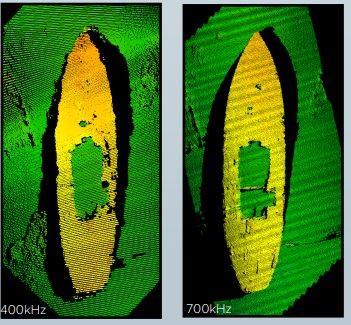
Parameters to Identify the Best MBES for Your Project
- Frequency: This is an essential parameter to consider as it determines the water depth that can be effectively surveyed and the accuracy of the data collected. High-frequency systems provide more detailed images of the seafloor, but they are limited in their depth range. Low-frequency systems can work in deeper water but are less detailed in their imaging capabilities. Many of the systems currently available have a wide frequency range (200-700kHz for example) that helps to ensure they can be used for a wide range of applications.
- Beamwidth: Beamwidth describes the individual beams created by the system. Systems with narrow beamwidth are suitable for precise data collection. For high-frequency systems, you can have beamwidth down to 0.3 degrees
- Number of Beams: Typically, the higher the number of beams, the higher the resolution. End clients often specify the minimum number of pings required in a set area. Increasing the number of beams can help to ensure the specification is met.
- Swathe Coverage: This is the viewing angle that the multibeam can obtain data. A single-head system may have a 130-degree view of the seafloor however this can be significantly increased when two receiver arrays are used simultaneously at differing mounting angles. A wider swath coverage results in greater area coverage but may also compromise resolution and data quality at high angles from vertical.
- Pulse Length: The pulse length of the transmitted pulse determines the resolution of the data collected. Longer pulses provide better range performance, but the resolution decreases.
- Operating Depth: Some echo sounders are designed for shallow waters, while others are designed for deeper waters. When choosing one for your project, you need to ensure you pick the most suitable system that provides the best resolution at the required range. In deep water when surveying from a surface vessel, the frequency of the system and therefore the resolution may be dictated by the long-range the acoustics pulses have to travel. If an AUV or ROV is used to mount a high-resolution MBES, the client can obtain very high-resolution data despite the depth.
- Environmental Conditions: The environmental conditions of the intended area of operation, such as temperature, salinity, and pressure, can also influence the performance of the echosounder.
- Ancillary Sensors: MBES can only obtain high-quality data when the quality of the ancillary sensors is also high. There is a wide range of systems that have integrated sound velocity, position, and orientation sensors. These systems help to mitigate installation errors that can occur.
- Data Processing Capabilities: The data processing capabilities of the echosounder system should be compatible with the intended data processing software used by the project. It is important to verify the compatibility of the software and processing power required for the data collected by the multibeam echosounder.
Choosing the right multibeam echosounder system can enhance the accuracy, quality, and efficiency of the data collected and aid in achieving your project’s goals.
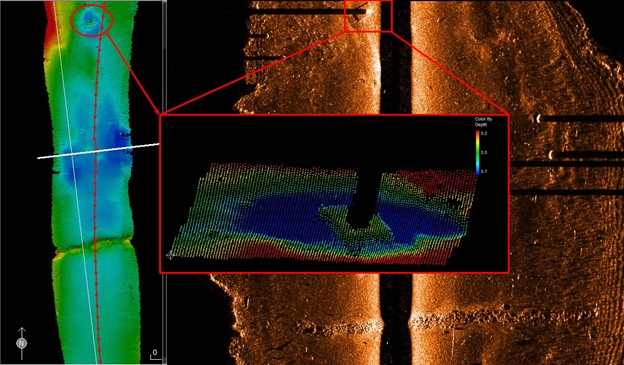
Benefits of Multibeam Echosounders
MBES offers several benefits over traditional single-beam echosounders. Here are a few of the most notable:
- High-resolution Mapping: MBES provides detailed images of the seafloor, allowing for accurate mapping of underwater features and topography.
- Wide Coverage Area: MBES can cover a large area of the seafloor in a single pass, making them more efficient than single-beam systems.
- Real-time Data Acquisition: MBES provide real-time data, allowing surveyors to adjust their survey plans and ensure complete coverage of the target area.
- Backscatter Data: This provides information on the reflectivity of the seabed. A rocky seabed provides a stronger reflection compared to soft mud and this difference can be shown visually to give an indication as to different seabed types.
- Water Column Data: It is also possible to obtain data from the water column and the seabed. This can be useful when trying to detect the source of leaking gas from a pipeline, for finding natural hydrocarbon seeps, or for fish stock studies.
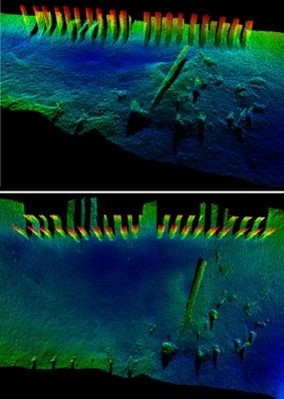
Applications of Multibeam Echosounders
- Hydrographic Surveying: This involves measuring and mapping the seafloor and other underwater features. This is particularly important for navigation, oil and gas exploration, and environmental management.
- Offshore Oil and Gas Exploration: Here it is used to map the seafloor and identify potential drilling sites. This helps to reduce the risk of drilling in areas with unstable seafloor conditions, which could cause equipment damage or environmental disasters.
- Oceanography: Multibeam echosounders are used in oceanography to study the seafloor, the water column, and marine life. By mapping the seafloor, researchers can better understand ocean currents, sediment transport, and other important oceanographic processes.
- Underwater Archaeology: MBES is also used to map and locate shipwrecks, submerged ruins, and other historical artifacts. By creating detailed maps of these underwater features, researchers can better understand the history and evolution of our oceans and the civilizations that inhabited them. Here is a case study of a project we did in Australia with MBES to find underwater rock art, read more.
- Fisheries Management: Multibeam echosounders are used in fisheries management to monitor fish populations and study their behavior. By mapping the seafloor and water column, researchers can better understand the habitats of different fish species and the impact of fishing on them.
- Underwater Construction: It is used to measure and map the seafloor and other underwater structures. This helps engineers to plan and design underwater structures, such as bridges and pipelines, more effectively and efficiently.
- Environmental Monitoring: MBES is used in environmental monitoring to measure the health and condition of marine ecosystems. By mapping the seafloor and the water column, researchers can study the impact of pollution, climate change, and other environmental factors on marine life.
In conclusion, multibeam echosounders are powerful hydrography survey tools for exploring and understanding our oceans and other bodies of water. They have a wide range of applications in various fields, with continued advancements in technology, these tools will play a key role in helping us to better understand and protect our marine environments. When starting a project, contact Unique Group’s experienced Sales Engineers who can help you choose the most suitable multibeam echosounder for your project.
